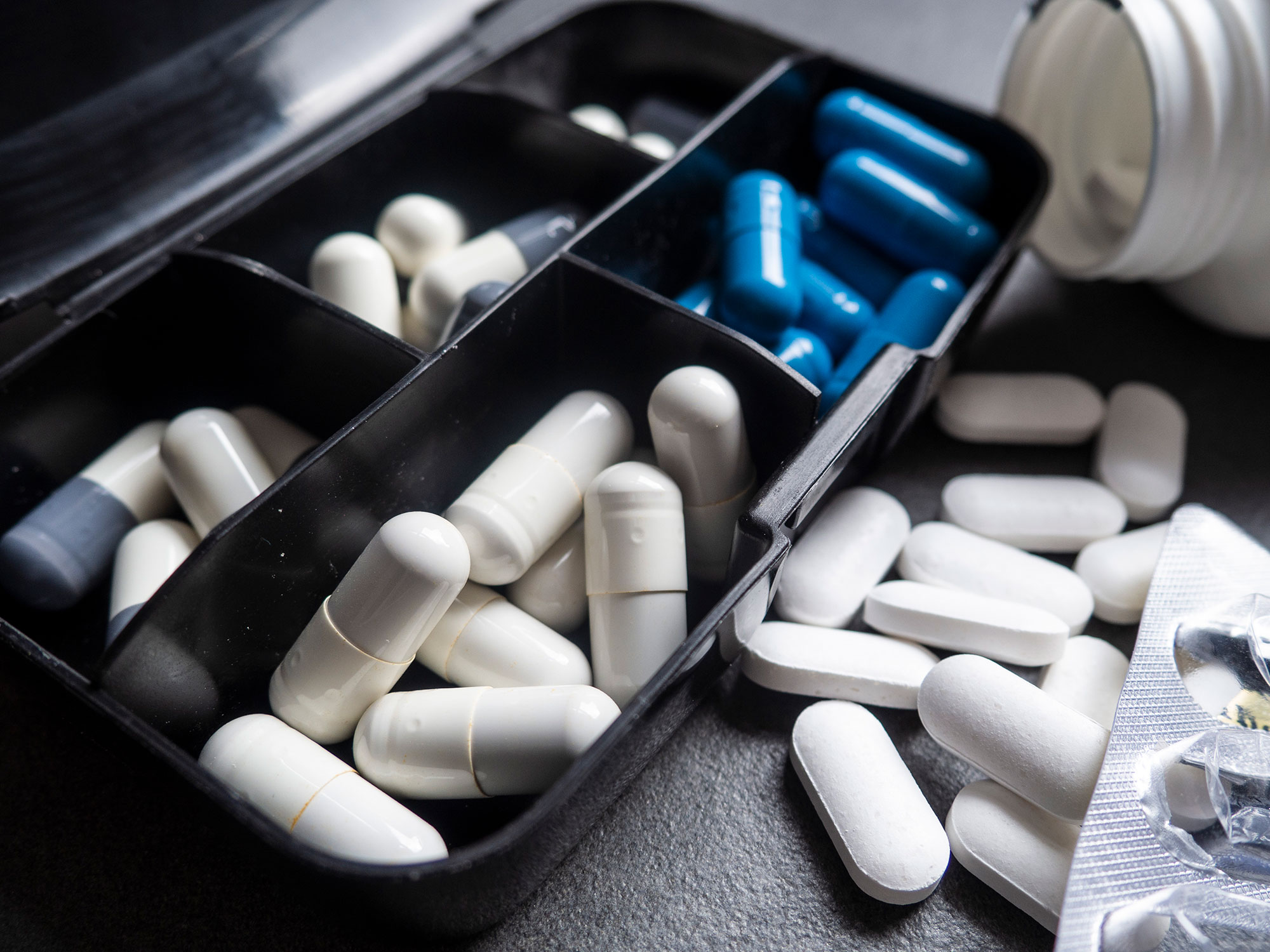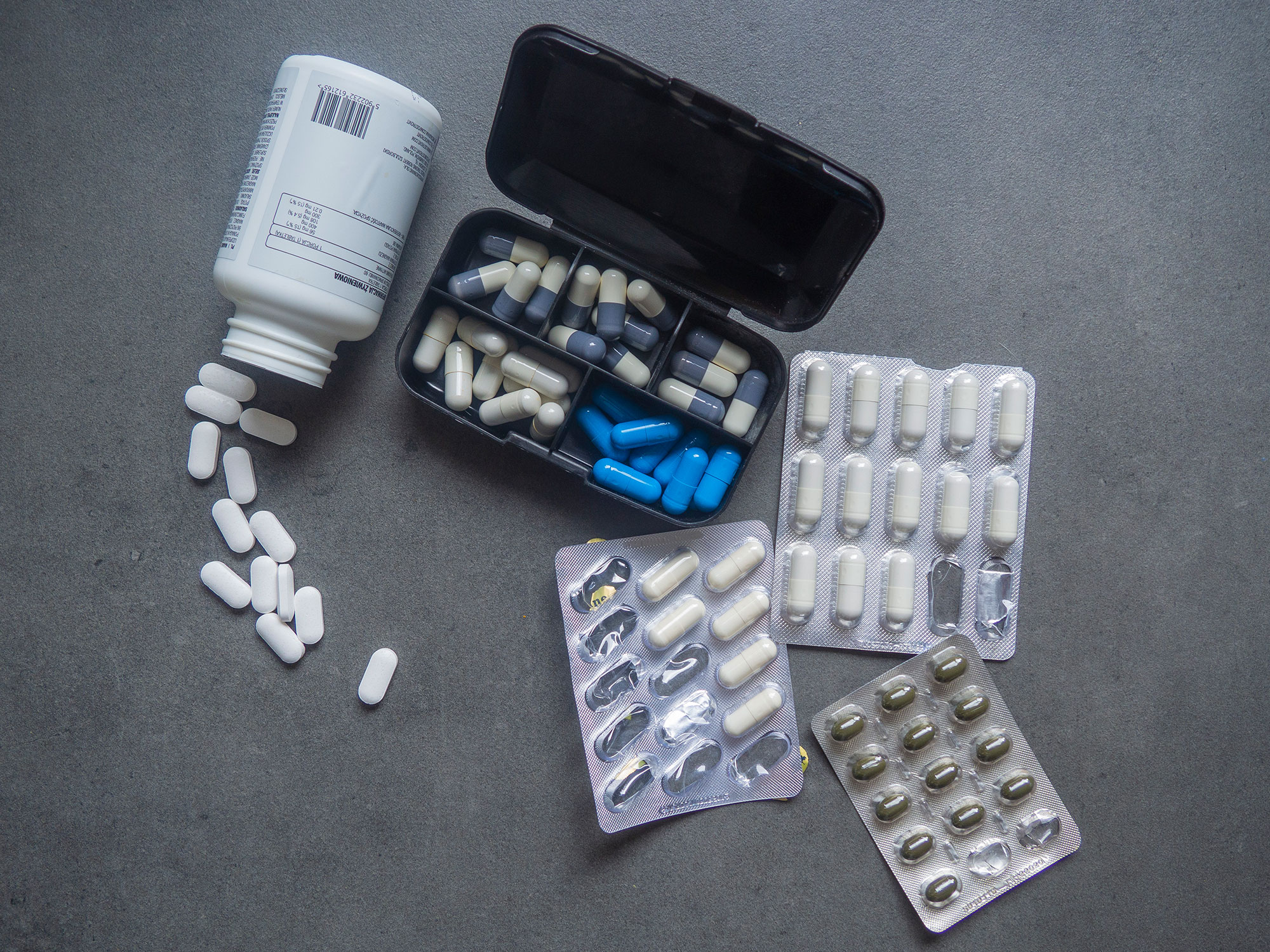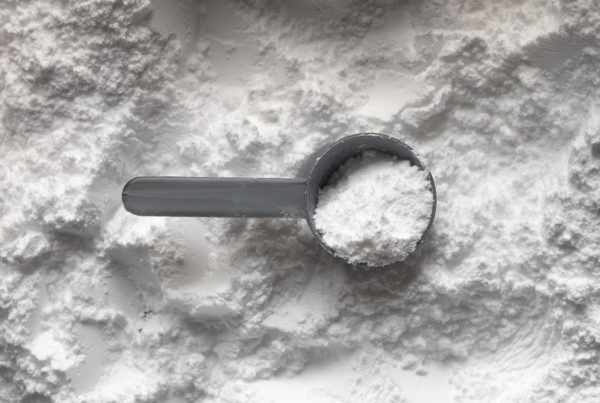1. Introduction to Supplements for Cyclists
Every active person starting their adventure with sport on the professional or amateur level has used supplements. The offer of supplementation companies is extremely rich and every year it is extended by-products using new active substances, other forms of administration or more and more sophisticated flavors of nutrients. The value of the US supplementation industry is growing by 6% every year. The average American spends more than 350 dollars a year on the purchase of dietary supplements, and the total annual sales amount to more than 22 billion dollars[1].
Supplements are so readily available and very popular because of the promise of quick results with little effort.[2] The supplement industry is bombarding us with new products, marketing is at a very high level, and the faces of supplement brands are leading athletes and bodybuilders. Buying supplements is not as simple as it may seem. Only a small number of consumers plan their purchases in detail. Most people buy what they recommend or what they see on banners and ads, not knowing if they really need it and will feel the effects of using it. Athletes and active people attach great importance to supplementation in order to improve their performance. They are not aware of the fact that other factors have a much greater influence on physical fitness, such as proper nutrition, a well-developed training plan, mental predisposition of the athlete. In many cases, the placebo effect is more noticeable than the supplement.
At the other extreme of the issue concerning the use of dietary supplements is their level of pollution. No athlete would like to be caught with a positive result on an anti-doping control test, all the more so by using supplements. According to a study from 2015, it is estimated that 40-70% of athletes take supplements, and between 6.4% and 8.8% are at risk of a positive result of anti-doping control for this reason[3]. The most common substances that contaminate the supplement’s composition are ephedrine, amphetamine derivatives, sibutramine, clenbuterol, anabolic androgenic steroids, and prohormones. This issue has been known to scientists since 2000 when a study based on the analysis of dietary supplements from 13 countries was conducted. The study covered 634 supplements that according to the label did not contain substances prohibited by WADA (289 supplements came from companies selling prohormones and 345 supplements from companies that did not have prohormones in their offer). 94 samples or 14.8% of all supplements were contaminated with prohibited substances that were not included on the label. 21.1% of samples from companies selling prohormones were contaminated, while 9.6% of companies not offering prohormones were contaminated. Most of them were purchased in the Netherlands (25.8%), Austria (22.7%), Great Britain (18.8%) and the USA (18.8%). For example, the concentration of nandrolone prohormones was recorded in values ranging from 0.01 µg / g to 190 µg / g of the supplement sample. These amounts seem minimal and not worth analyzing, but taking 1 µg of nandrolone prohormones gives a positive result on anti-doping control for several hours after its introduction into the body [4] The most commonly contaminated supplements are the so-called pre-training nutrients, but prohibited substances are also present in such commonly used products as vitamin C, multivitamins and magnesium preparations. [5]
2. Cycling Supplements Groups
At the other extreme of the issue concerning the use of dietary supplements is their level of pollution. No athlete would like to be caught with a positive result on an anti-doping control test, all the more so by using supplements. According to a study from 2015, it is estimated that 40-70% of athletes take supplements, and between 6.4% and 8.8% are at risk of a positive result of anti-doping control for this reason[3]. The most common substances that contaminate the supplement’s composition are ephedrine, amphetamine derivatives, sibutramine, clenbuterol, anabolic androgenic steroids, and prohormones. This issue has been known to scientists since 2000 when a study based on the analysis of dietary supplements from 13 countries was conducted. The study covered 634 supplements that according to the label did not contain substances prohibited by WADA (289 supplements came from companies selling prohormones and 345 supplements from companies that did not have prohormones in their offer). 94 samples or 14.8% of all supplements were contaminated with prohibited substances that were not included on the label. 21.1% of samples from companies selling prohormones were contaminated, while 9.6% of companies not offering prohormones were contaminated. Most of them were purchased in the Netherlands (25.8%), Austria (22.7%), Great Britain (18.8%) and the USA (18.8%). For example, the concentration of nandrolone prohormones was recorded in values ranging from 0.01 µg / g to 190 µg / g of the supplement sample. These amounts seem minimal and not worth analyzing, but taking 1 µg of nandrolone prohormones gives a positive result on anti-doping control for several hours after its introduction into the body [4] The most commonly contaminated supplements are the so-called pre-training nutrients, but prohibited substances are also present in such commonly used products as vitamin C, multivitamins and magnesium preparations. [5]
After this not very glorious introduction to the supplements, probably in the minds of many of you a question arises – “Is there any sense in applying and will there be more of the former in the balance sheet of profits and losses? The answer is yes, there is a sense to use, but many people, grabbing supplements, forget about the foundations of proper nutrition and hydration, quality and length of sleep, diligently conducted intensive training. Supplements are not a substitute for that. Many people want to take shortcuts and using them as much as a possible belief in obtaining better results thanks to them. Does more mean better in this respect? No, not many people are aware that most supplements do not have a confirmed effect and that the studies they have done have not been conducted on humans. Without the proper knowledge, we risk buying products that won’t give us any positive results, and we’ll throw our money down the drain.
The classification of supplements created by the best sports societies in the world comes to our aid. One of them is the Australian Institute of Sport, which publishes a yearly distribution of supplements based on the analysis of the available scientific evidence.
This classification divides the supplements into 4 groups:
Group A – strong scientific evidence, supplements for use in specific sporting situations using research-based protocols
Group B – in this group there are supplements whose scientific results are ambiguous or which may be useful in specific circumstances.
Group C – supplements not supported by scientific literature or no reliable research to confirm the action.
Group D – supplements exposed to the highest risk of pollution, dangerous, and substances included in the composition are on the WADA (World Anti-Doping Agency) list [6].
In this article, I will present you with evidence in support of the use of Group A supplements.
They are in it:
| Group A |
|---|
| Food for athletes |
| Drinks for sportsmen and sportswomen |
| Energy Gels |
| Sweets for athletes |
| Energy bars for athletes |
| Electrolyte supplements |
| Protein supplements |
| Mixtures of macro-ingredients (creation of liquid meals) |
| Clinical supplements |
| Iron supplements |
| Calcium supplements |
| Multivitamin supplements |
| Vitamin D |
| Probiotics |
| Ergogenic supplements |
| Caffeine |
| Beta-alanine |
| Sodium bicarbonate |
| Beetroot juice |
| Creatine |
| Glycerol |

3. Group A Supplements
1. Food for athletes
The main task of these products is to provide macroelements such as protein, carbohydrates and fat with minimal fiber supply and to supplement the microelements: sodium, potassium, magnesium, and vitamins.
The use of these supplements is extremely helpful in planning nutrition before, during and after physical activity. Sports food such as gels and bars and sweets for athletes is highly energetic, consisting mainly of carbohydrates, which allows for quick access to energy. The advantage is also the taste and relatively small volume of these products, which translates into a lower risk of gastrointestinal problems and provides comfort during competitions or training. Very often these products are additionally enriched with ergogenic substances such as caffeine.
Among drinks for athletes we distinguish:
- hypotonic drinks – they are characterized by low osmolarity and their carbohydrate content is less than 4g / 100ml. They irrigate better than pure water but worse than isotonic drinks.
- Isotonic drinks – the most commonly used, best for long-term efforts, on long journeys. They have similar osmolarity as human body fluids, which results in the fastest absorption time. They contain 5-8g of carbohydrates / 100ml.
- hypertonic drinks – they have the highest osmolarity and the highest carbohydrate content – over 8g / 100ml. They are better absorbed than pure water. An example of a hypertonic drink can be a gassed coca cola – which in the 90s was used by cyclists because of the caffeine content.
Drinks for athletes also contain electrolytes – sodium and potassium.
The advantages of using drinks for athletes are the help in maintaining proper water-electrolyte metabolism, prevention of dehydration and help in delaying the occurrence of fatigue.
2. Protein drinks
Supplements characterized by high protein content – over 70%. We distinguish, among others, whey protein concentrate, whey protein isolate, soy protein isolate, pea, rice, hemp, and mixture. As you can see, the offer of protein supplements is also adjusted to people following plant diets.
In the case of cyclists, is there any sense in using protein supplements?
That depends. The main purpose of protein supplements is to supplement this macro-ingredient in the diet. Is it possible to take care of this without protein supplements? Yes, it is possible and there is no problem with that. The main advantage of using these preparations is their digestibility, which causes a quick start of repair processes and will contribute to better regeneration after training or competitions. Another advantage of using protein supplements is their convenience, speed of preparation and benefits resulting from the possibility of adding the preparation to regular meals or making a sheik with the addition of carbohydrates and fats, which can successfully replace a full meal. Protein supplements can be safely described as a substitute for other sources of protein in the diet, such as meat, fish, dairy products or eggs.
3. Clinical supplements
are mainly vitamin products, probiotics, and preparations with mineral components. The use of these supplements should be considered as an aid in compensating for deficiencies in the body, never as a major source of vitamins and minerals in the diet. In order to determine possible deficiencies, the level of the above-mentioned components should be investigated by blood collection rather than estimated on the basis of dietary history. Only then can we consider including these supplements in the plan and choosing an appropriate dose.
4. Ergogenic supplements
supplements that improve sports performance and may contribute to the increase in efficiency.
5. Caffeine
is one of the best-tested substances in the context of sport. It delays the occurrence of fatigue and allows to continue the effort with optimal intensity for a longer time.[7] There are many forms of caffeine administration on the market, including tablets, capsules, gels, chewing gum, aerosols, bars and drinks such as coffee, yerba mate, tea, guarana. An important issue when using caffeine is its absorption time. When planning caffeine administration in the training or competition area, its form and time of administration should be taken into account.
Studies
The study involved 12 men with an average level of training. They were to perform a four-phase intermittent sprint test on their bikes. They were divided into 3 groups, which they received:
-25g of carbohydrates
-25g carbohydrates + gel with 100mg of caffeine
-25g carbohydrate + placebo gel
Each participant was to take the first dose one hour before the start of the test and the second dose at the end of the second phase of the test.
The authors of the study did not find any significant difference in the speed of the sprint. In the group of 25g carbohydrates and 25g carbohydrates + placebo gel, there were tendencies to slower results than in the group with caffeine gel.
After the third phase of the sprint, the group with 25g of carbohydrates and + caffeine had a significantly lower fatigue index and a lower evaluation of the effort in comparison to the other two groups.[8].
The second study of caffeinated gels showed that the consumption of 21.6 g carbohydrates + 100 mg of caffeine 10 minutes before the 2000m beaten by rowers (13 men) significantly improved efficiency compared to gels containing only carbohydrates.
A group with caffeine – 471 seconds.
Decaffeinated group – 466 seconds[9]
An appropriate dose of caffeine is 3-6mg / kg of body weight. A good solution is to test the lower fork first so as not to expose yourself to gastrointestinal problems. If you consume too much, it may cause side effects (e.g. trembling, anger, increased heart rate).
Everyone has heard of caffeine, but this is not necessarily the case with beta-alanine. This compound forms a dipeptide, which is carnosine, which is stored in the skeletal muscles. Long-term intake leads to an increase in carnosine reserves. Beta-alanine improves exercise capacity during exercise. Its action is recorded in high-intensity exercises, but it lasts from 60 to 240 seconds.
If beta-alanine is used, the effects will be felt only after 3-4 weeks. After such a time, the muscle cells are saturated with carnosine. The side effect of using this supplement is paresthesia, i.e. tingling of the skin, mainly in the area of the face and ears. It can be eliminated by dividing the dose (6g / day) into 2-3 portions depending on the person. Beta-alanine can be used in long uphill stretches or in very intense duels at the finish of the race. In these situations, we will feel strong muscle burning, and carnosine cells saturated with beta-alanine supplementation will delay the occurrence of fatigue and improve our endurance.
6. Beetroot juice
is another ergogenic supplement that can be successfully used by athletes and physically active people. It is worth noting that people less trained than professional athletes will feel greater benefits from including beetroot juice in their daily supplementation. This is because of the metabolic adaptations that have taken place over the years of training. Drinking beetroot juice is a safe procedure because we can prepare it at home. This way we do not expose ourselves to contamination of supplements by supplementation companies. Consumption of beet juice increases the concentration of nitrite in the blood, which leads to improved sports performance. This translates into a reduction in the oxygen cost during submaximal exercise.
This is well illustrated by a 2010 study where a group of men was given 500ml of beet juice a day for 6 days. 72 hours before the end of the experiment, the subjects were subjected to an exercise test until the end of the experiment. The time of exhaustion was 25% longer in the beetroot juice group compared to the placebo group. It was also noted that beet juice caused lower energy consumption to generate the same strength compared to the placebo group.[11].
Beetroot juice can be supplemented in single doses (500ml, e.g. before a competition or training) and we will feel the benefits of administration, but the 2017 premise allows us to conclude that the supplementation 14 days before a competition will be more effective due to the possible accumulation of nitrates in muscle tissue.
Due to the length of the cycling competition (>40minutes), the evidence for the effectiveness of beet juice supplementation is limited so far. The reason for this is lower intensity during prolonged efforts, which translates into a lower probability of limiting oxygen access to the muscles, in which case beet juice is the most effective.
7. Creatine
as well as caffeine is one of the most studied supplements. Its action is considered on many levels, even in the context of regeneration after head injuries. Creatine improves exercise abilities during the training period. In the case of track cycling, this will translate into higher speeds during repeated high-intensity efforts with a short regenerative break. A side effect of the most commonly used form of creatine, monohydrate, will be an increase in body weight (0.6 – 1kg) through increased water retention. However, the supplementation industry offers many different forms to reduce this phenomenon.
The use of creatine is similar to that of beta alanine. To notice the effects we need to saturate the creatine receptors (5g per day). This usually happens after 4 weeks without using the saturation phase.
8. Glycerol
appeared in group A of the Australian Institute of Sport classification only this year. This substance causes water retention in the body. There are not many studies using this supplement. It can be concluded that glycerol can be useful in the context of prolonged cycling races or long distance running on high-temperature days.

4. Summary
Supplementation in the life of an athlete is an important issue, but not the most important one. The greatest emphasis should be on appropriate, individualized nutrition. Using supplements will help us to achieve better results, improve our sporting performance, but they should not be taken as a golden mean. Swallowed tablets and drunk liquids will not replace our intensive training plan. They will only help you achieve your goals and give you a slight advantage over people who don’t use supplements.
Index:
[1] https://nccih.nih.gov/research/results/spotlight/americans-spend-billions
[2] https://www.ncbi.nlm.nih.gov/pubmed/19584607
[3] https://www.ncbi.nlm.nih.gov/pubmed/25722470
[4] https://www.ncbi.nlm.nih.gov/pubmed/14986195
[5] https://www.ncbi.nlm.nih.gov/pubmed/18563865
[6]https://www.sportaus.gov.au/
[7] https://www.ncbi.nlm.nih.gov/pubmed/17277604
[8] https://www.ncbi.nlm.nih.gov/pubmed/23837918
[9] https://www.ncbi.nlm.nih.gov/pubmed/25365032
[10] https://www.ncbi.nlm.nih.gov/pubmed/23918656
[11] https://www.ncbi.nlm.nih.gov/pubmed/20466802
[12] https://www.ncbi.nlm.nih.gov/pubmed/28663382










ciekawa lektura w moim wieku czas regeneracji jest coraz dluzszy ale zapotrzebowanie na witaminy wieksze przy duzej ilosci startow
Wiek ma olbrzymi wplyw na regenracje oraz osiagane wyniki. Jednak w kazdym wieku mozna stac sie silniejszym i szybszym w zaleznosci od stazu treningowego. Zawsze trzeba sluchac swojego organizmu.